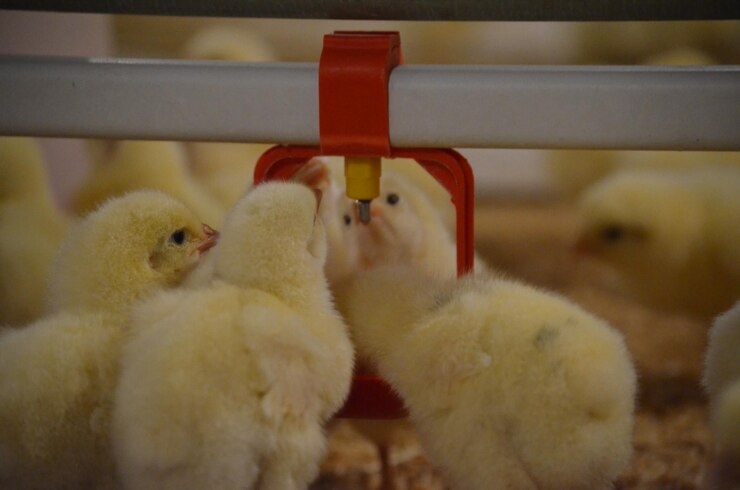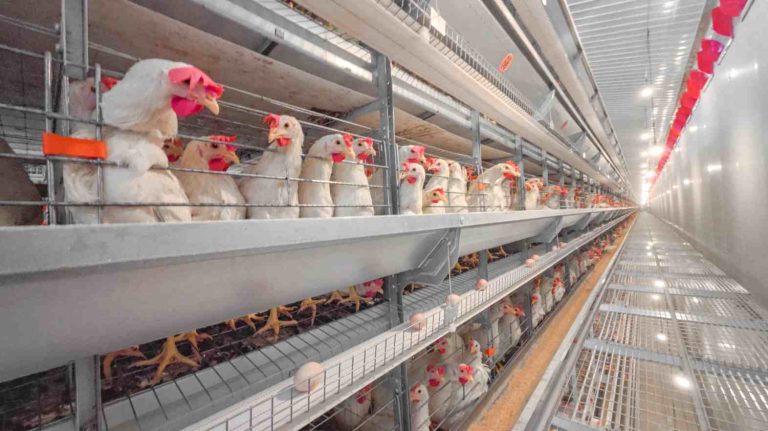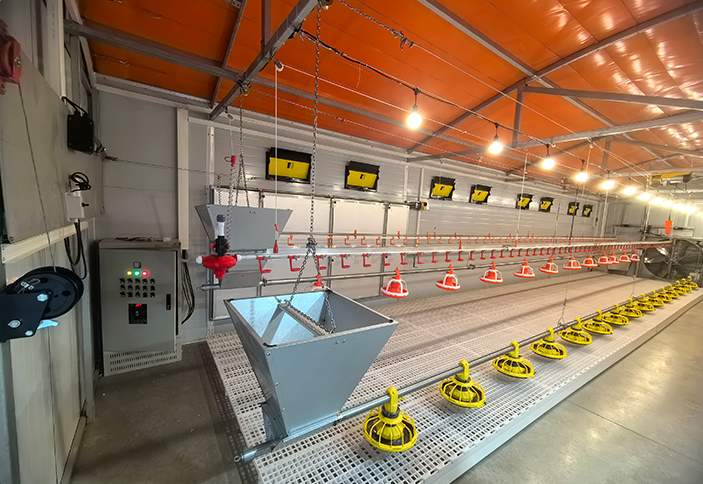Why is Cage Maintenance Crucial for Layer Birds?
How Does Proper Maintenance Affect the Health of Layer Birds?
Maintaining bird cages properly is essential for the well-being and productivity of the birds living in them. Regular cleaning and disinfection are crucial in preventing the spread of pathogens and reducing the likelihood of disease outbreaks. A clean environment also shields birds from bacteria that could compromise their immune systems. Furthermore, maintained cages help minimize the risk of injuries caused by sharp edges or damaged parts, creating a safer living space for our feathered friends.
What Role Does Cage Design Play in Prolonging Bird Lifespan?
The design of level bird cages plays a vital role in ensuring the well being and longevity of the birds housed within them They prioritize features like smooth surfaces and robust materials to reduce any risks that could cause stress or harm to the birds living inside them Incorporating hot dip galvanized materials in building the enclosures helps prevent rust and maintains their strength, for a longer durationThe design of enclosures for hens is intended to create a living environment that caters to the needs of the chickens including elements such, as water sources and feeding areas to promote their development and egg laying abilities effectively This well planned layout aims to reduce potential stress factors that could impact the longevity of laying birds.
Key Features of a Well-Maintained Layer Bird Cage
What Makes Galvanized Steel an Ideal Material for Cages?
Galvanized steel is famous for its durability and rust resistant properties that make it ideal for constructing bird cages designed to withstand environmental conditions effectively and stand the test of time with minimal maintenance required by poultry farmers in the long term.
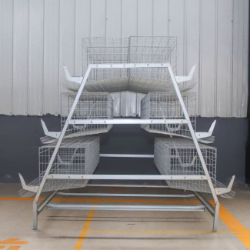
Benefits of Hot-Dip Galvanizing in Cage Longevity
Hot dip galvanizing involves applying zinc to steel to form a layer that guards against rust and harm.. For the frame columns we use 2mm thick hot dip galvanized sheets weighing 275 grams each.. These sheets are smoothly rolled into a piece for enhanced durability and stability.. This method not only extends the lifespan of structures but also preserves their cleanliness by averting surface deterioration that could encourage bacterial development..
Importance of Automated Systems in Cage Maintenance
Automated systems significantly enhance cage maintenance by streamlining responsibilities for better efficiency.
Automatic Egg Collection and Feeding Systems
Automated egg collection systems reduce contact with eggs to minimize the risk of contamination while automated feeding systems ensure that all birds receive a consistent supply of feed for optimal growth across the entire flock size increase production efficiency by enabling a greater number of hens to be raised within limited space constraints.
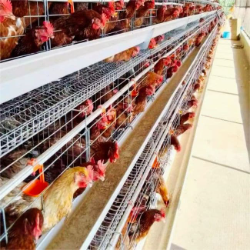
Efficient Manure Removal for Cleaner Environments
Maintaining an atmosphere in poultry cage setups greatly depends on having efficient manure removal systems and using different methods to clean up waste at the cage floor while also addressing odors and controlling ammonia levels effectively to prevent disease spread.
Daily and Weekly Maintenance Practices for Layer Bird Cages
Essential Daily Tasks to Maintain Hygiene and Comfort
Ensuring that tasks are carried out diligently is crucial for upholding conditions within layer bird habitats.
Cleaning Feeders and Drinkers
Make sure to clean the feeders and water dispensers to prevent mold growth or the presence of harmful bacteria that could put the birds health at risk.
Inspecting Cage Doors and Flooring
Regular inspections ensure that doors remain securely closed and that the flooring is well-maintained to prevent accidents or unauthorized individuals from escaping.
Weekly Maintenance Checklist for Optimal Conditions
Disinfecting Floors and Netting
Ensuring to clean every week helps get rid of any germs that could have accumulated over time and using gentle disinfectants keeps the birds healthy without posing any harm to them.
Checking Ventilation Systems and Lighting
It’s important to make sure there is airflow in chicken coops to regulate temperature and keep the air quality good, for the birds healthiness and well-being.
Advanced Tips for Enhancing Cage Functionality
How to Optimize Ventilation and Airflow in Layer Cages?
Placing chicken coops to allow proper ventilation involves align a direction towards the prevailing wind in the region having the coops extend from north to south and positioning vents to catch the downward airflow as per local wind flow tendencies aiding in maintaining a steady indoor climate, with good air circulation.
The Role of Lighting Systems in Egg Production Efficiency
Light is important for stimulating egg laying in layer hens.
Simulating Natural Light Conditions
Automating lighting systems to imitate light cycles can benefit birds by aiding them in maintaining their natural rhythms and enhancing their egg laying productivity significantly. Adjustable lighting configurations also provide farmers with the flexibility to modify exposure levels based on variations or specific farming goals.
Common Challenges in Cage Maintenance and How to Overcome Them
How Can Farmers Prevent Disease Outbreaks Through Proper Maintenance?
To avoid disease outbreaks in layer bird enclosures and safeguard the health of the chickens proactively maintain hygiene and sanitation practices are vital components to consider carefully. It is important to implement cleaning and disinfection routines to minimize the risk of pathogen transmission, within the cage environment. The enclosed design of the laying hen enclosure plays a role in effectively managing bacterial spread, which helps in reducing infection rates and supporting the well-being of our feathered friends. Regularly disinfect the floors and equipment in the cage to prevent harmful bacteria buildup and maintain a safe environment, for our avian companions.
Automated systems also contribute to disease prevention by implementing methods to sanitize manure in poultry farming settings such as cleaning the cage bottom and employing horizontal and oblique mechanisms for thorough cleaning processes. This approach aids in maintaining an environment by eliminating waste materials and lowering ammonia levels effectively while also safeguardin g the birds from respiratory issues.
Proper ventilation is crucial in chicken coops to ensure the health and well-being of the birds.. It’s advisable to align the chicken coops from north to south with air vents placed downward in line with the prevailing wind direction for effective airflow.. This setup promotes air circulation and assists in regulating moisture levels that might encourage growth.. Furthermore, farmers should regularly inspect water pipes for leaks or contaminants to prevent diseases spread through water sources..
Addressing Wear and Tear in Multi-Layered Cages
Maintaining level bird enclosures always comes with the inevitable task of handling wear and tear issues that naturally occur over time and can be quite challenging to prevent entirely. As a solution to this matter and to ensure lasting durability in the long run the choice is made to use strong materials like galvanized steel. Our primary support pillars are crafted from 2mm sheets of hot dip galvanized steel weighing 275 grams.These sheets undergo a rolling process to form a single unit with consistently high levels of strength that offer superb resistance against corrosion, resulting in the preservation of the cages structural integrity, over an extended duration.
Farmers should regularly inspect the cages for signs of damage such as wires or sharp edges that could endanger the safety and health of the birds they are caring for. It is important to replace any damaged parts to prevent potential injuries and maintain a safe environment for the birds. Additionally upgrading to modern cage designs can reduce wear and tear. For instance adjustable cage structures provide flexibility to accommodate farm sizes and methods. This adaptability ensures that the cages remain functional even as needs change, over time.
Automated feeding systems also help reduce the pressure on cages by spreading the weight across layers and ensuring a seamless connection to the feed trough to prevent waste and enhance feeding efficiency while minimizing strain on structural elements.
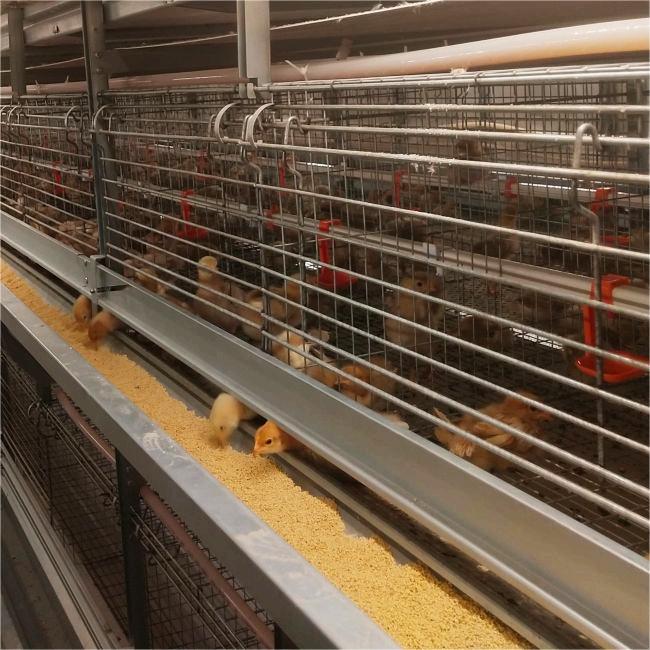
About Us
Zeus specializes in developing solutions for breeding poultry on farms drawing from our extensive experience in designing advanced cages for hens that prioritize durability, productivity and the well-being of our feathered friends under our care. Our product lineup features both stacked H-type cages, for larger scale operations and space efficient ladder layer A-type cages tailored to maximize space utilization. The H-type cages are beneficial as they save space on the floor and enable breeders to raise animals. This also reduces labor and management costs. It can result in increased profits for chicken breeders.
We are committed to helping farmers by providing high-quality tools that enhance productivity while also caring for the well-being and contentment of their animals.
FAQ
Q: What Are the Key Features of a Well-Maintained Cage?
The enclosure is constructed with durable, rust-resistant materials such as hot-dip galvanized steel, designed to house automated feeding and waste management systems. This setup enhances efficiency and reduces manual labor in egg collection.
Q: How Often Should Cages Be Cleaned?
Tasks involving cleaning require removing any debris from the feeders and water dispensers to prevent contamination and sanitizing the floors and nets weekly using approved chemicals to effectively eliminate pathogens.
Q: Why Is Ventilation Important in Layer Bird Cages?
Proper ventilation is crucial for keeping the temperature and air quality at levels in chicken coops to ensure the health of the birds by managing humidity and reducing ammonia buildup; when situating chicken coops, it’s important to consider the natural airflow patterns in the vicinity for effective ventilation.


